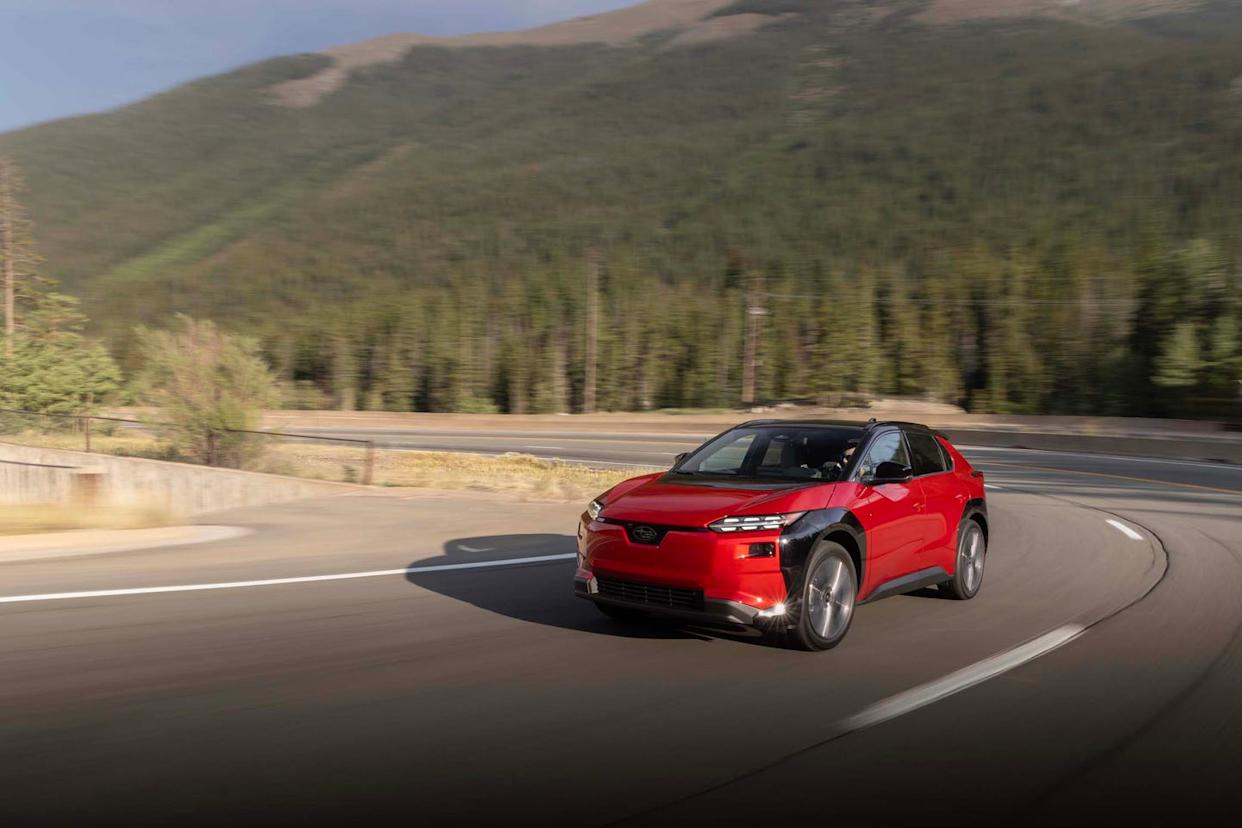
What makes a vehicle "all-new"? We tend to shy away from using the term, but in our corner of the world, complete newness requires a new or at least evolved platform as well as fresh styling in and out, and it's usually accompanied by some dimensional difference (most often an increase in overall size). According to Subaru's lawyers, whether or not to apply the label is a percentage-based calculation, and they determined that enough of the 2026 Solterra EV crosses the threshold.
This, mind you, on a vehicle with the same platform, hard points, and sheetmetal as its three-year-old predecessor. The number of tweaks—and there are many—apparently satisfied the disclaimer writers, who gave the product folks the green light to tout the 2026 Solterra as such. We spent some time in what we'll call a heavily updated Solterra while pondering whether words will ever have meaning again.
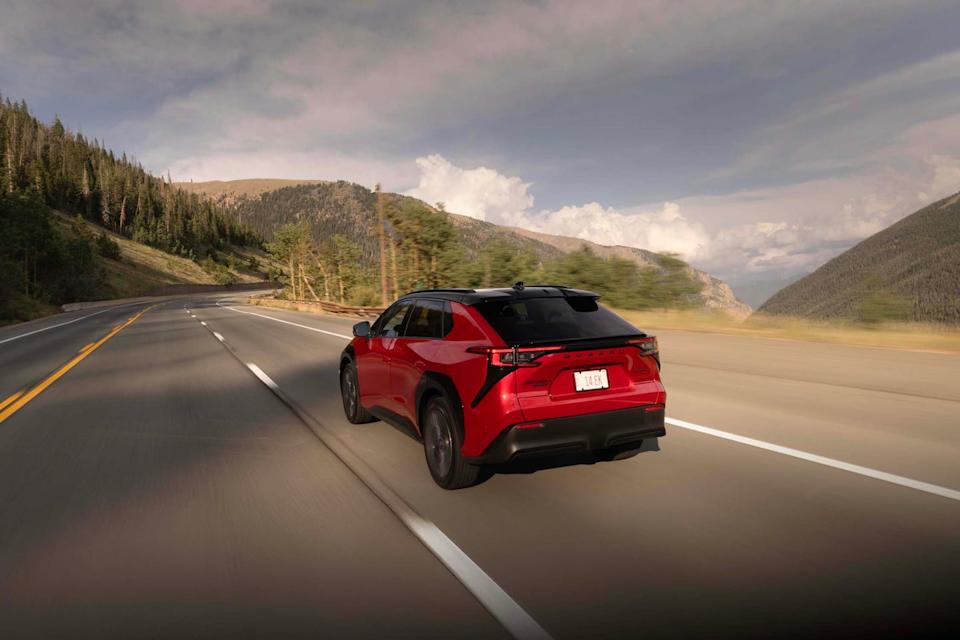
A Little More Differentiation
We can't talk about the Solterra without acknowledging its Toyota twin, the bZ (née bZ4X). The two compact electric crossovers were developed (and redeveloped) together and have a grand total of zero tuning differences, so with few exceptions, these two products are nigh identical.
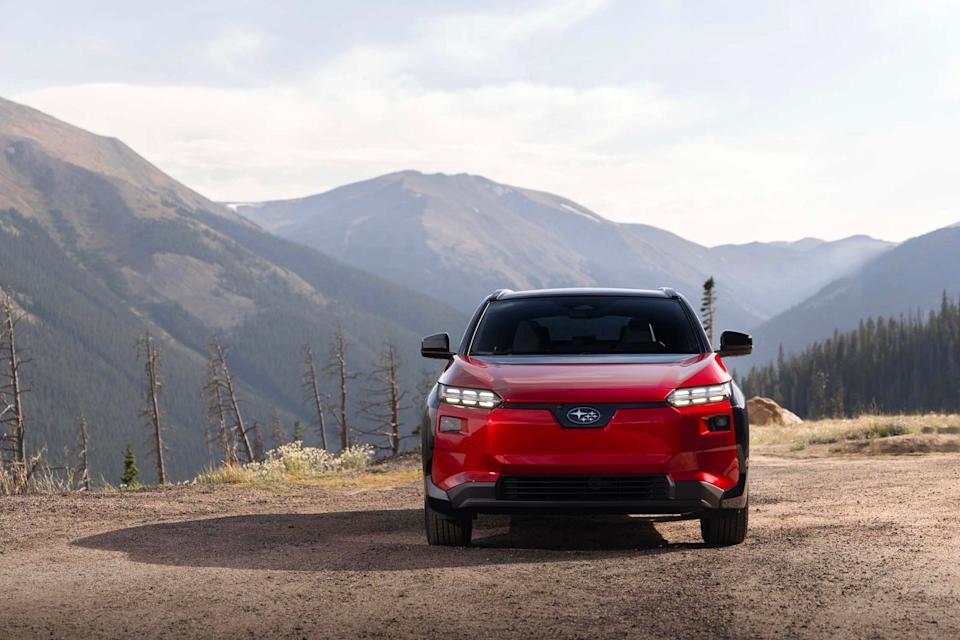
Exhibit A is the new front-end plastic. The Solterra's freshened nose is less busy than before. Headlight units have been separated from those handling other lighting functions and sit lower on the fascia, while a newly illuminated Subaru badge makes it easier to tell it apart from Toyota's version, which gets an updated face of its own for 2026. Solterras painted white, black, and silver now feature body-color fender trim, although you can still see the cut lines where separate pieces meet, which is particularly noticeable on the face of the charge-port door. Other colors come with black-painted pieces, whereas the old model got you unpainted gray wheel-arch plastic, no matter the chosen body hue.
The charge door, meanwhile, has migrated from the driver's side to the opposite front fender and now covers a Tesla-style NACS port. Subaru says the flip-flop was made to help drivers who prefer to nose into charging spots, especially at Tesla Superchargers. Keeping the port in line with the A-pillar means that getting a Supercharger's stubby hose to connect will be a bit of a stretch.
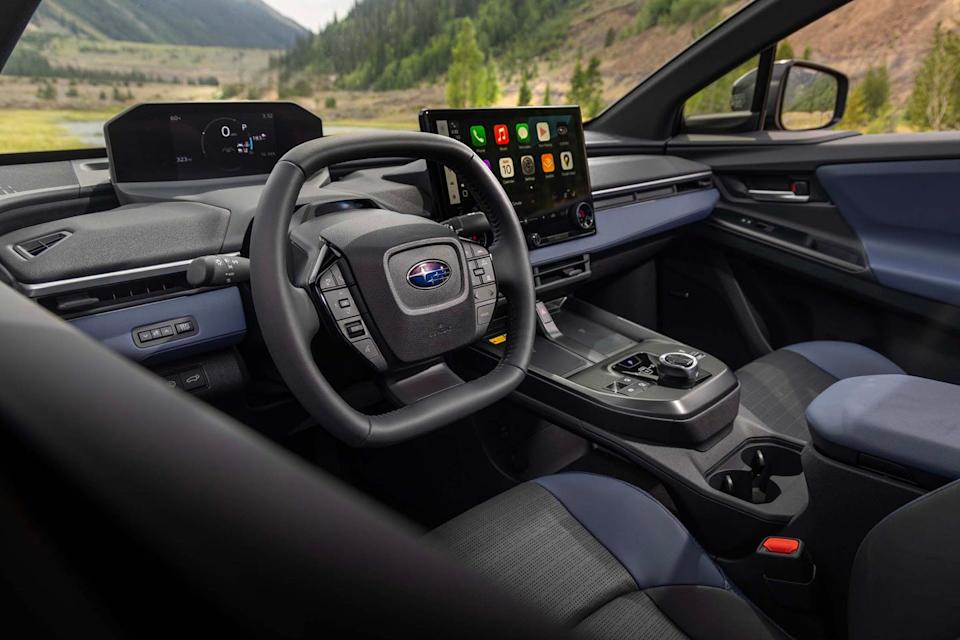
A Freshened Interior with Additional Features
Everything is in its right place inside the updated Solterra, although there are a few notable changes. The space in front of the gauge display no longer features a trough, opening up the feeling of the dash. The center console has been redesigned to house a pair of wireless charging pads, although they lack any grippiness to hold phones in place. The shift dial is less of a reach but retains its unintuitive design that requires you to first push down on the center before turning.
A larger screen tops the center stack, now measuring 14.0 inches on all Solterras (previously, the screen was 8.0 inches on lower trims and 12.3 inches on top models). HVAC controls are now mostly screen based, with the larger touchscreen taking the place of the separate display and buttons used before. We do appreciate the temperature-control dials overlaid on the display for retaining some tactility.
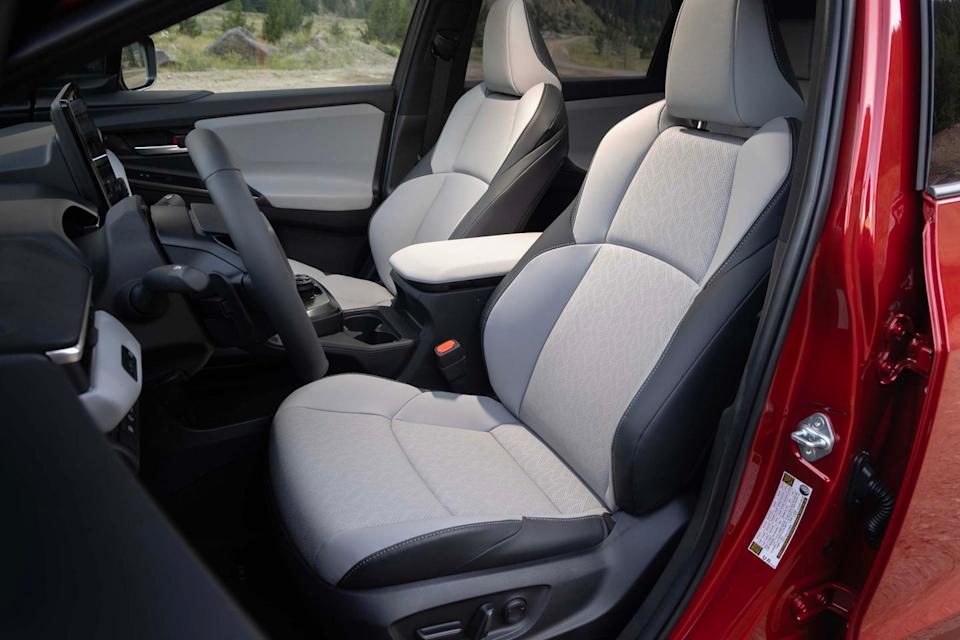
If you were blindfolded and dropped into either the Toyota or the Subaru version, the way to know which your abductor is driving is by palpating the steering wheel. In addition to wearing the brands' respective logos, they have different shapes—classic round for the Toyota and a squircle in the Subie. Why? Because.
One interesting item on the top trim is a pair of radiant heaters aimed at the driver and front passenger's lower extremities. The driver's is on the bottom of the steering column, while the co-pilot's occupies space where you might expect a glovebox. (There is no glovebox.) They switch on or off with the heated seats; the idea is to warm front occupants using less energy than blowing lots of hot air.

XTra Power
Because this is a Subaru, where all-wheel drive is a key brand feature—the BRZ being the lone exception—the Solterra skips the entry-level front-drive powertrain and its smaller battery pack, as available in the bZ. Instead, all 2026 Solterras get an estimated 67-kWh battery (up from 65 kWh previously). Where once there was just a single powertrain available, the revised Solterra now offers two choices. The base setup puts out 233 horsepower, up from 215, and comes on the Premium and Limited trims. A new higher-output powertrain swaps in a stronger front motor, giving XT models a healthy 338 horsepower.
We spent our time behind the squircle of an XT. In a word, it feels quicker than the old car. Subaru says to expect to accelerate to 60 mph in under five seconds, a worthwhile improvement. In our testing, the outgoing 215-hp Solterra managed that sprint in 6.1 seconds—not slow, but leisurely compared with other dual-motor EVs—with the revised base powertrain likely shaving a tenth of a second or two off that time.
In addition to feeling spritely, the XT's motors are smooth in their power delivery—not a given with all EVs—with no squirminess with the pedal mashed. The two-motor all-wheel-drive system's control logic has been updated. Before, the system used vehicle-acceleration sensors to determine where to shuttle the electricity that becomes torque, but in the update, the engineers found that accelerator position is a better determinant. The regen braking modes are now more distinct, with a wider spread, but the paddles controlling them still have counterintuitive plus and minus icons that correspond to more or less deceleration. Someone needs to come up with a better way to describe additional slowing.
Despite the modest increase in battery capacity, the Solterra's advertised range sees significant improvement. The Premium model carries an EPA estimate of 288 miles, while the XT dials that back to 278 miles per charge. Both handily beat the previous Premium model's 227-mile EPA rating. Expect real-world totals to be a bit lower, though; in our 75-mph highway range test, the previous Solterra managed 200 miles on a full charge.
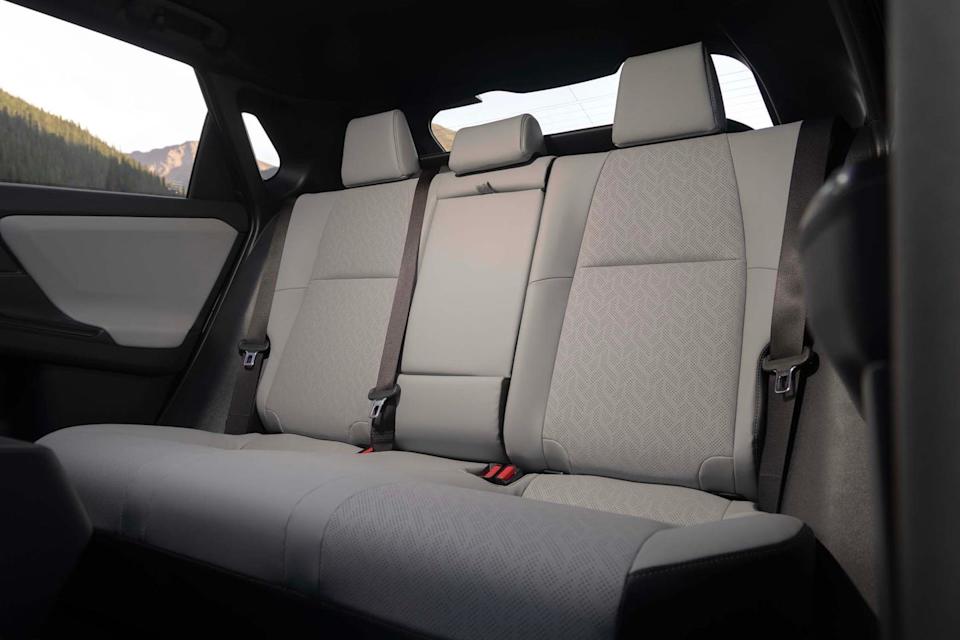
Subaru (and, by extension, Toyota) stiffened the front suspension while softening the rear. We found the ride to be just a little starchy, but the car remained well composed over everything but the worst pavement. The steering was also altered; it's neither particularly quick nor noticeably slow, and it suits the generally relaxed nature of the vehicle.
Subaru says the 2026 model's range increase is a result of more efficient motor designs and some other small adjustments here and there, such as a further aero-optimized rear spoiler and side mirror caps, lighter carpeting, and wheel bearings that reduce friction by a claimed 18 percent.
There's also the possibility of quicker charging thanks to better preconditioning, which can be enabled automatically when using the built-in nav to direct you to a known charging station or requested by the driver with a couple of screen taps. Subaru claims that a DC fast-charger will take the pack from 10 to 80 percent in around 30 minutes. AC charging will be quicker as well, with an 11.0-kW onboard charger replacing the old 6.6-kW unit.
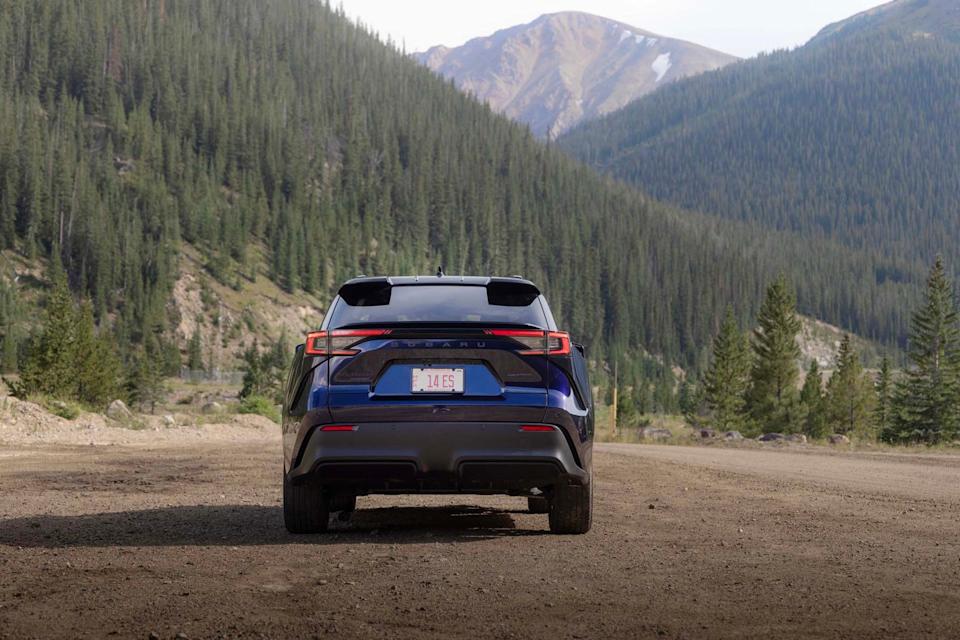
More to Learn
There are plenty of other changes that were more difficult to suss out without a back-to-back drive with the previous Solterra. Those include acoustic treatments for the windshield and front side glass, plus more sound-deadening material to lower interior noise (we'll measure noise levels when we have a car to test). There's also an improved crash structure around the battery pack (not planning to test that one), smaller motors with integrated inverters, a higher-res backup camera, standard headlight washers, and a redesigned roof structure that no longer needs a support blocking part of the sunroof. The motor mounts are stiffer to reduce shuddering, and the axles are said to be quieter too.
Subaru hasn't announced pricing for the 2026 model year, but we're told to expect very modest increases over the 2025 model—less than $100. Toyota recently dropped 2026 bZ pricing, and it's down considerably for the entry-level model (which, again, isn't offered on the Subaru side), but the 338-horse Limited AWD comes in about a grand higher than for 2025. Note that Subaru and Toyota offer different standard equipment across their respective trim levels.
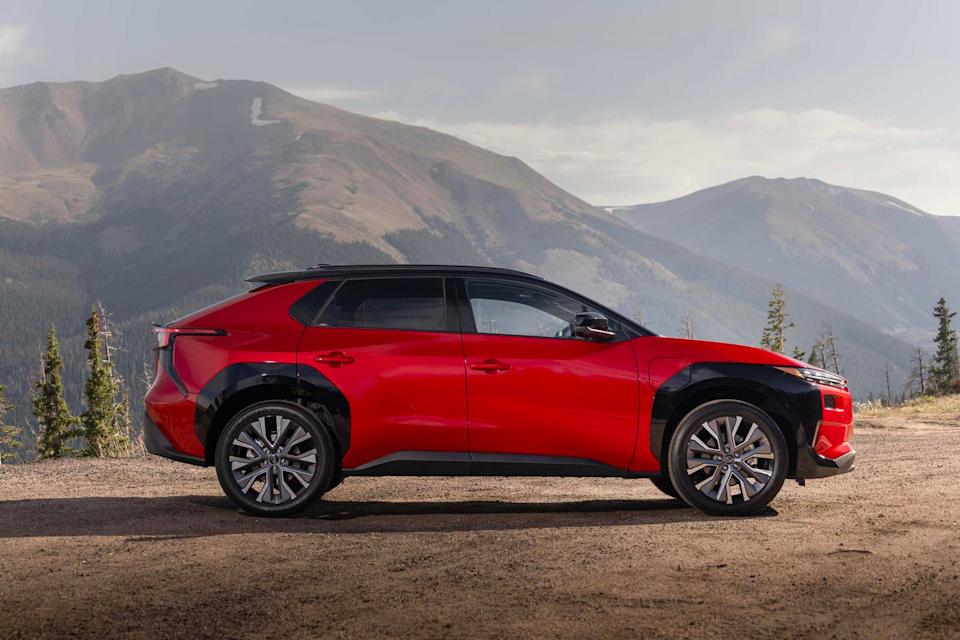
Call it all-new, thoroughly revised, or Fred—the 2026 Solterra is an improvement on its predecessor and is more competitive, though not a leader among electric SUVs. We expect it to continue to be a top choice for Subaru faithful looking to go electric, while more mainstream folks are likely to end up in a Hyundai Ioniq 5 or even a Toyota bZ.
You Might Also Like

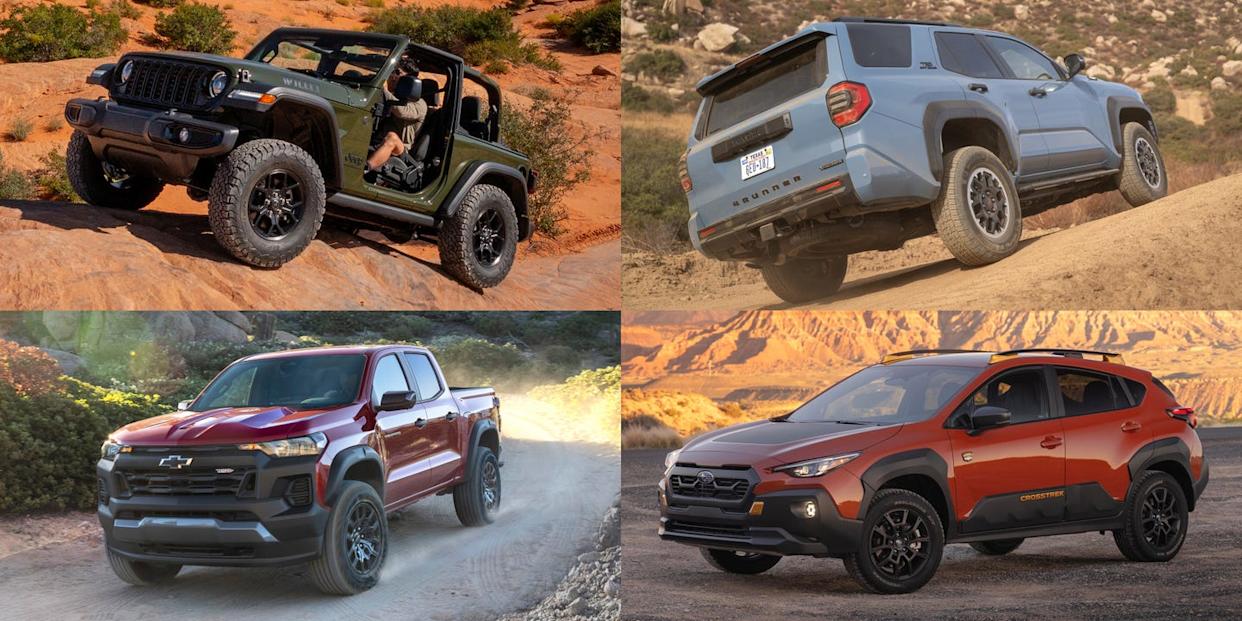
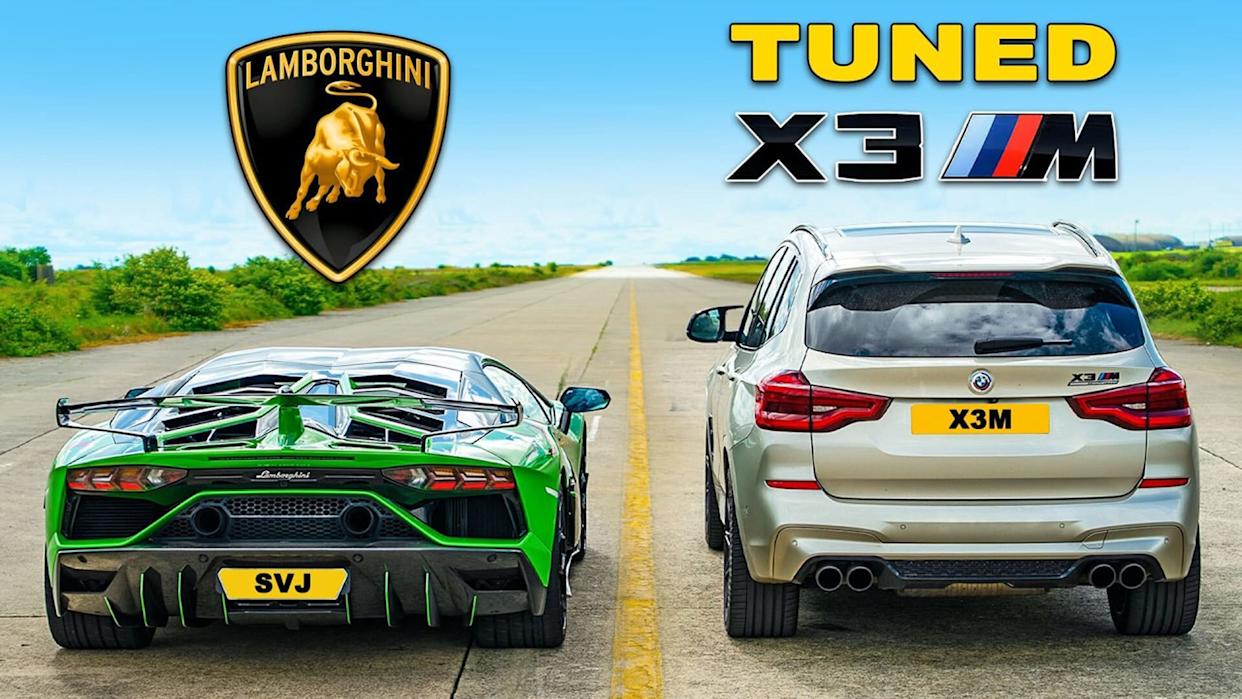
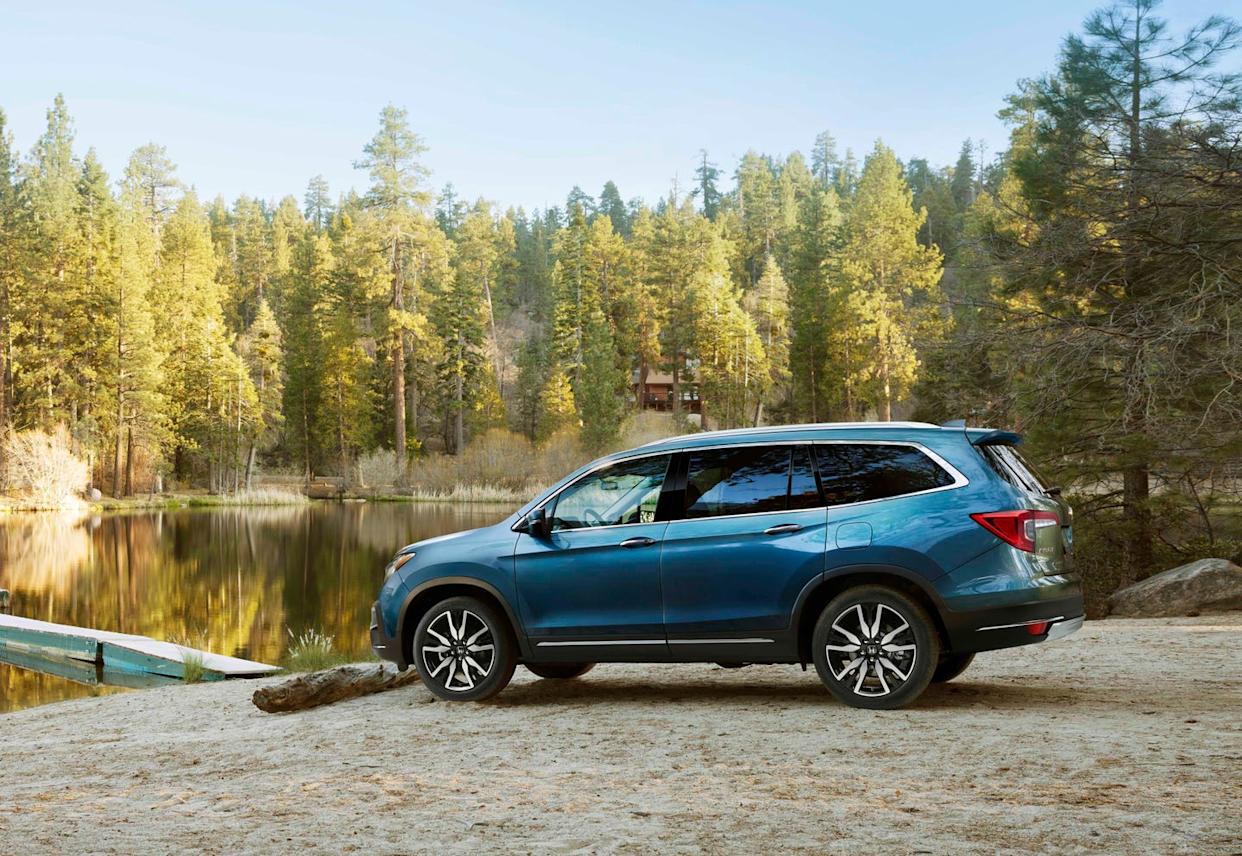
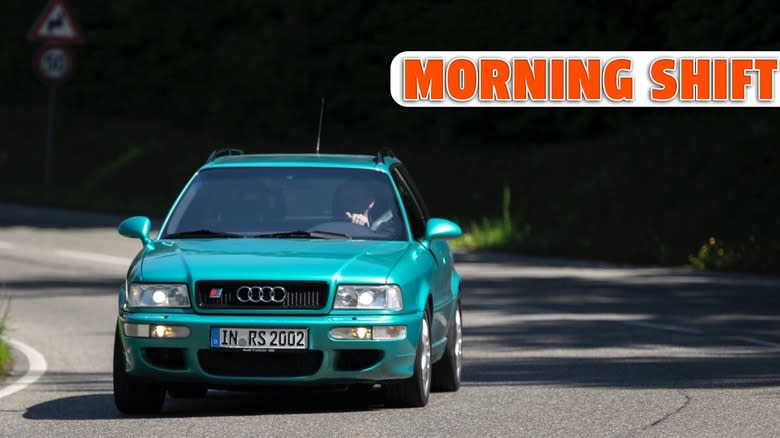
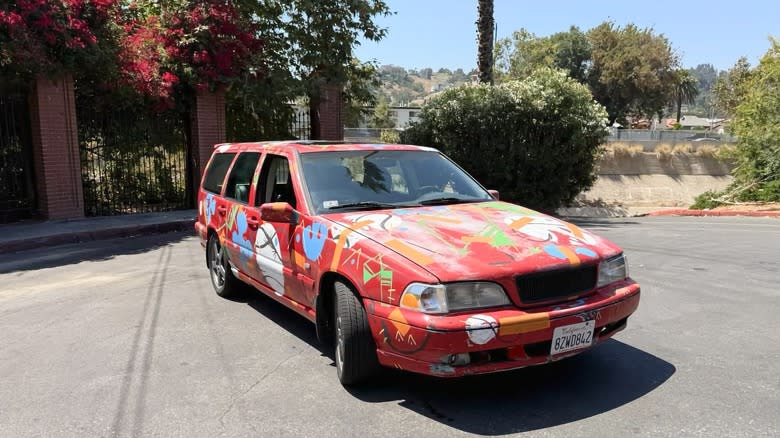
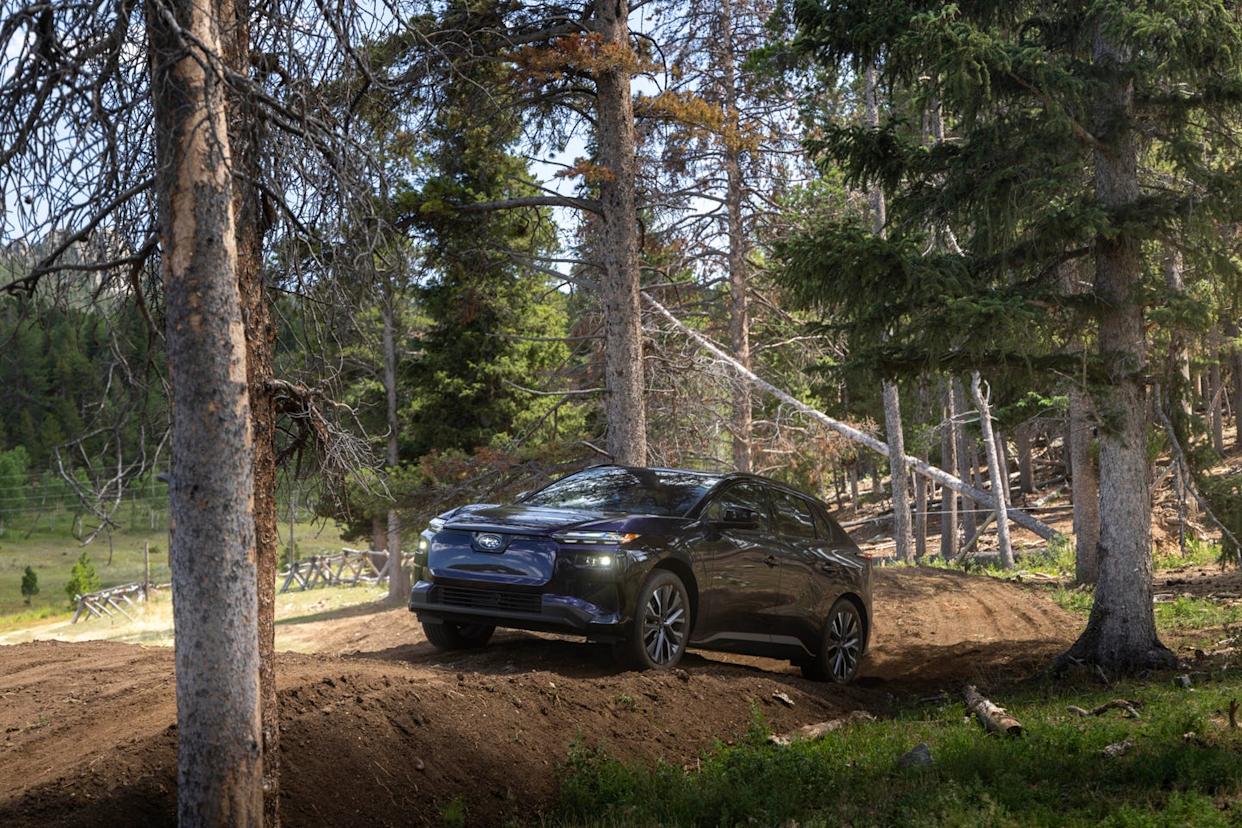
Comments